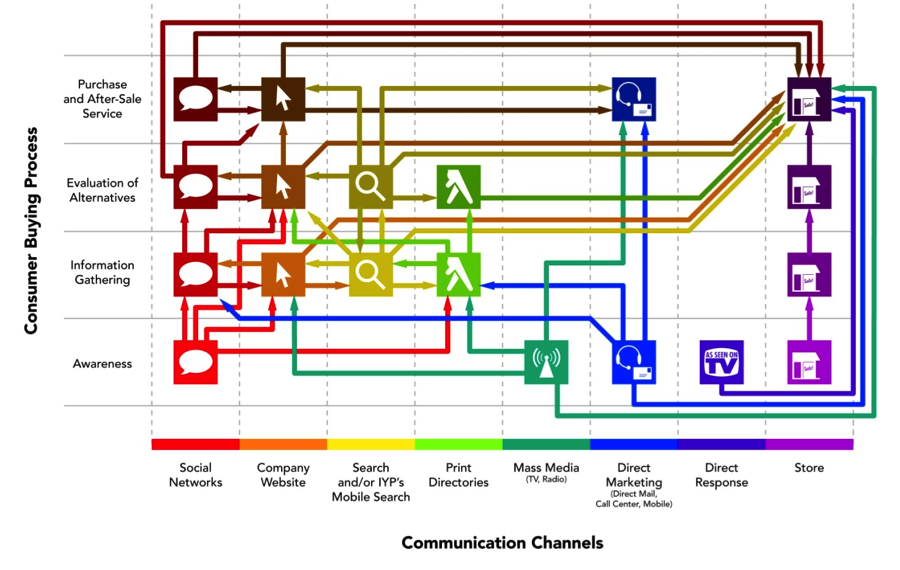On the children’s live-action adventure show Captain Midnight, members of the Secret Squadron used special decoder rings to decipher messages that no one else could understand. The secret decoding power provided a competitive advantage that allowed the Secret Squadron to win.
Wouldn’t it be great if you could slip on a special marketing decoder ring to decipher your prospects? Imagine the advantage of knowing the secret communication channel and message to most efficiently and effectively win the sale. Marketing case studies would be written and awards presented as victory over your competition would be certain. The challenge is that consumer’s aren’t predictable, linear, rational or sequential beings. In other words, good luck decoding your shopper. That’s not to suggest you should ignore consumer behavior or the buying process though. Because when you do crack the code by engaging your customers through the right touch point with relevant and timely information, you build consumer trust and improve their buying experience.
Alignment with the Consumer Buying Process
The customer experience is influenced by all touch points people encounter from moments before they are even aware of a need until they have fulfilled that need. Marketers can enhance the customer experience and strengthen their sales funnel if they carefully plan marketing activities that align with the consumer buying process. A marketing strategy that is aligned with the buying process and integrated across all the communication points will create a competitive advantage. Most marketers are familiar with the four key stages of the consumer buying process:
- Awareness: This is the start of the consumer buying process that also includes the time frame before the actual “need or want” for a product or service is recognized. Often the objective of the Awareness stage is to build general and favorable awareness of a company, product or service in the marketplace.
- Information Search: Consumers often conduct some form of information search to help them through their purchase decision. Sources of information could be family, friends and neighbors who already have the product. Alternatively they may search the internet (Google, social media platforms, company web sites, etc), read print publications (newspapers, trade magazines, etc.) or talk to sales people directly.
- Evaluation: Consumers assign ranking factors to products and services. Much like a point scoring system, they work out in their mind which brand to purchase. They form their opinions on what features, functions, locations, and pricing will provide the most value. They also attach different degrees of importance to the information source. In recent years consumers have lost trust in brands and tuned out their mass advertising messages. This created a surge in word-of-mouth marketing (WOMM) as consumers turned to each other through rating and ranking sites, blogs and other social platforms.
- Purchase and After-Sale Service: In most situations the product can probably be purchased through several channels; including, a store, the web, or over the phone. Post purchase behavior and research shows that after-sale engagement is also critical. Manufacturers of products and service providers clearly want new customers to feel proud of their purchase, and to know that the customer experience was delivered as promised.
As consumer behavior and expectations continue to change over time, the linkage between the customer experience and the consumer buying process becomes even clearer. In the near future, advertisers will continue to look for innovative ways to engage consumers with greater efficiency by bringing tighter integration between search, social media and mobile marketing. Why search, social and mobile? First, search marketing is efficient, measurable, and it captures a consumers’ expression of intent. In a like manner, social media is an open canvas of consumer expression in platforms where consumers are spending a great deal of time. Finally, on-the-go consumers increasingly rely on their mobile devices for both local search and access to social networking sites. Think of the integration of search, social and mobile as a primary combination key to your new marketing decoder ring.

